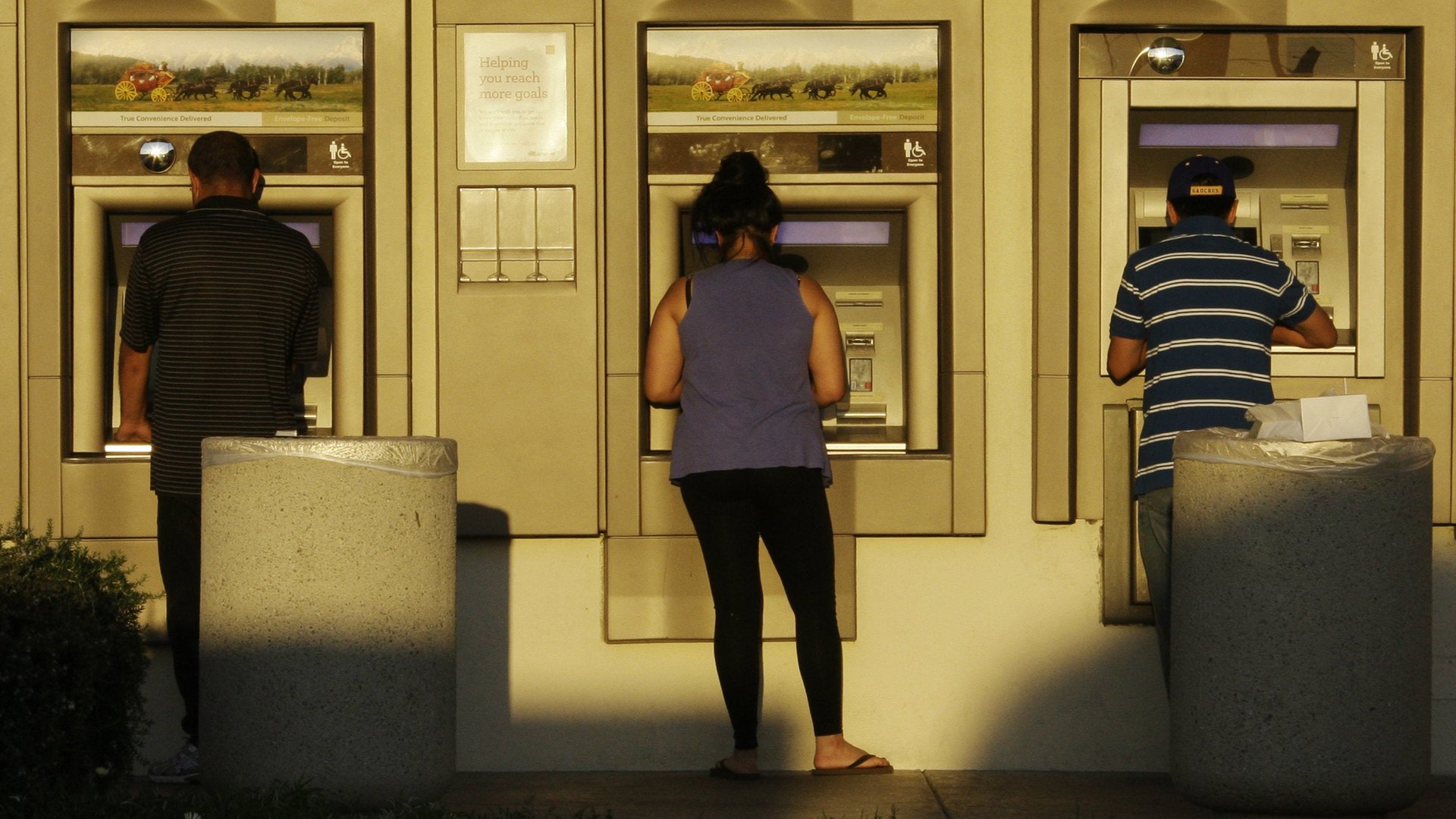Big banks are closing branches and investing in more important real estate—your phone
The most important real estate in the world for banks is on your mobile phone—physical branches are closing down, and more investment is being made in digital wallets. This week, JPMorgan launched a partnership with PayPal, bolstering both companies’ digital payment networks.


The most important real estate in the world for banks is on your mobile phone—physical branches are closing down, and more investment is being made in digital wallets. This week, JPMorgan launched a partnership with PayPal, bolstering both companies’ digital payment networks.
The most recent round of bank earnings provides a window into the shift to mobile services. Bank of America and JPMorgan both expanded their mobile customer bases by double-digit percentages versus a year ago.
Banks are evolving as competitors like Apple and PayPal’s Venmo grow their footprint in digital financial services. They don’t want to lose contact with their customers, so they’re fighting back with projects like Zelle, a bank partnership that let’s people send payments to each other through rival banking apps.
What’s happening in payments is part of bigger, broader changes in finance. People like former Barclays CEO Antony Jenkins believe the transformation is akin to what Uber did to the taxi business. Banks are spending money to keep pace with the disruption, but Jenkins said in a Bloomberg Television interview that they may not have the right “culture or mindset” to make the leap.
If the banking industry as we know it is upended by digital newcomers, no one can claim they didn’t see it coming. Billions of dollars have poured into fintech startups, and major Wall Street institutions are among the biggest investors in, and builders of, the new technology.
Competition in consumer finance isn’t letting up for incumbent banks. Some American lenders are opening up their infrastructure to technology firms to develop new services, according to PwC. This approach will get a big boost in the EU from rules that will make banking more open for competition next year. Starting in January, tech companies will have much greater access to banks’ customer data, and they will use it to create new services.
That’s how the “Uber moment” Jenkins describes could happen: Uber weaves together data (APIs) from Google Maps (locating customers and drivers), Google Cloud Messaging (sending text messages), and PayPal (for payments), according to another PwC report. The ride-hailing company integrates them to create an entirely new service.
Likewise, technology companies may soon have access to far more consumer financial data to build new businesses, or even use data the industry hadn’t tapped before. ZestFinance is an interesting example, deploying machine learning to underwrite credit for people who have little credit history. This technology could widen the pool of available customers for financial firms. China’s largest internet search provider, Baidu, is working with ZestFinance to incorporate search, payment, and location data for credit-scoring purposes, and hopes to use that data to sell more goods to Chinese consumers.
The line between finance companies and technology firms is getting blurrier, and consumers have more choices to manage their money than ever before. Big banks are partnering up with fintech firms, while still trying to innovate from within. Meanwhile, nimble startups are muscling in on the banks’ turf, hoping to either supplant them, sell services to them, or be acquired by them. It may not be apparent from moribund bank branches on main streets, but there is a frenzied battle underway to capture space that is far more valuable for the future of finance.